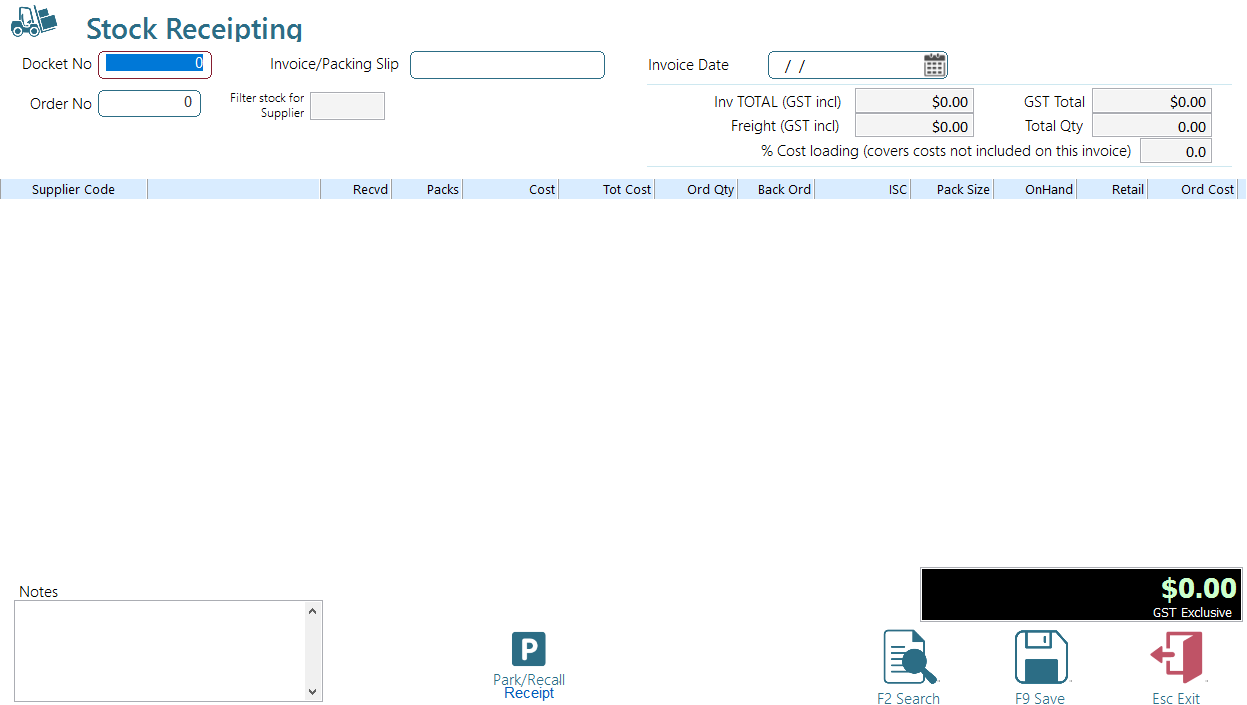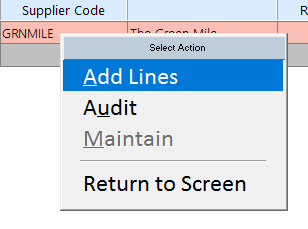Stock Receipting
Stock receipting refers to the process of receiving and recording incoming inventory or stock from suppliers. It involves verifying the delivered items against purchase orders or invoices, updating inventory records, and ensuring that the received stock aligns with the quantity, quality, and specifications ordered.
This process is crucial for several reasons:
- Inventory Accuracy: Stock receipting helps maintain accurate inventory records by confirming the arrival of goods and updating the system accordingly. Accurate inventory data is essential for efficient stock management, preventing stockouts or overstock situations.
- Supplier Accountability: It allows retailers to verify that the received items match what was ordered and helps in identifying discrepancies or errors in shipments. This process holds suppliers accountable for delivering the correct products in the right quantities and conditions.
- Financial Accuracy: Accurate recording of received stock contributes to precise financial reporting, enabling businesses to track costs, monitor expenses, and manage budgets effectively. Stock receipting maintains the average cost of items.

To receive stock items, follow these steps:
Navigate to Stock Receipting under the operations menu.
* Note: Access to this function may be restricted to certain operators. If you encounter access issues, contact your supervisor for assistance.
- Adding a new receipt:
- Press "Enter" to generate a new docket number.
- Enter the invoice/Packing slip reference (mandatory).
- Input the invoice date; by default, it's set to today's date but should reflect the actual invoice creation date.
- Checksum Numbers:
- While not mandatory, the system uses these numbers to verify data entry against entered lines, helping identify potential errors.
- Order No: For users of the Ramsys ordering system, it's important to enter the order number here to confirm that the order is no longer outstanding. This action will preload the grid with items, significantly expediting data entry.
- Supplier Name (optional): If entered, the system filters the stock file by this supplier.
- Items Grid: Here, input the items being received. If receiving from an order, this section may be pre-filled, requiring only the Qty received input.
- Supplier Code: Enter the code on the invoice. If the item does not exist and you are using the premium version of the POS you will be asked if you wish to add it. there are three ways to enter/search a code.
- Input the item details (Description, Manufacturers code, barcode, or ISC Code) to add items to the system. The system will search across these fields based on the text you provide. If a single item matches, it will be added; if multiple items match, a grid will appear for selection.
- Use <F2-Search> for databases with extensive item listings (>500,000 items).
- Alternatively, scan the item's barcode if available.
- Packs: this is the qty received on the invoice, note it items are received in packs enter the number of Packs, the system will work out the number of items from the pack qty.
- Total Cost: The total cost of the line, the system will calculate the individual costs, you will be warned if the cost varies by +5%
RightClicking an item in the Grid

Add Lines: Generally the system will auto append new lines as required. If for any reason it does not simply select this option.
Audit: This will provide you with a transaction audit for the selected item.
Maintain: If you are using the Premium version of the POS (all Stock control in the enterprise is done in Ramsys Central).
Parking a Stock Receipt.
Ramsys POS allows you to park a stock receipt at any time. This feature is especially useful in environments where there is only one POS and it needs to be temporarily freed up for sales activity.
When a receipt is parked:
It will remain available until it is recalled or the POS is exited.
If you attempt to exit the POS with a parked receipt, a warning will be displayed.
The receipt itself is not saved until it is recalled and completed.
To recall a parked receipt:
Simply load the Stock Receipting screen from the menu.
If a receipt is parked, it will load automatically.
If no receipt is parked, a new blank receipt will appear.